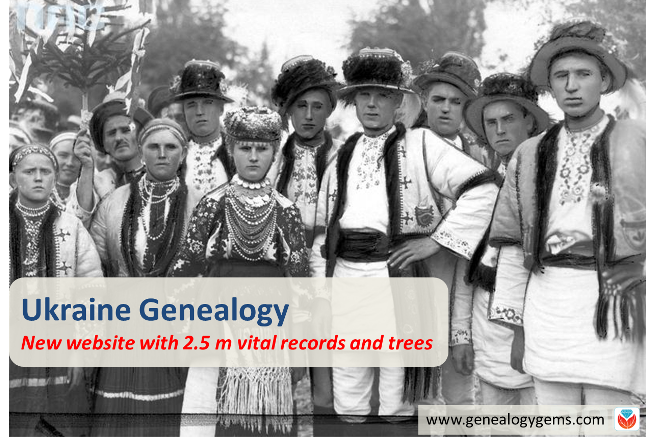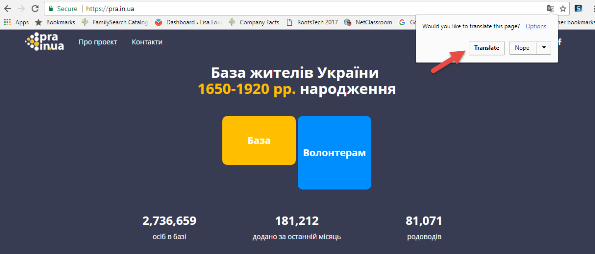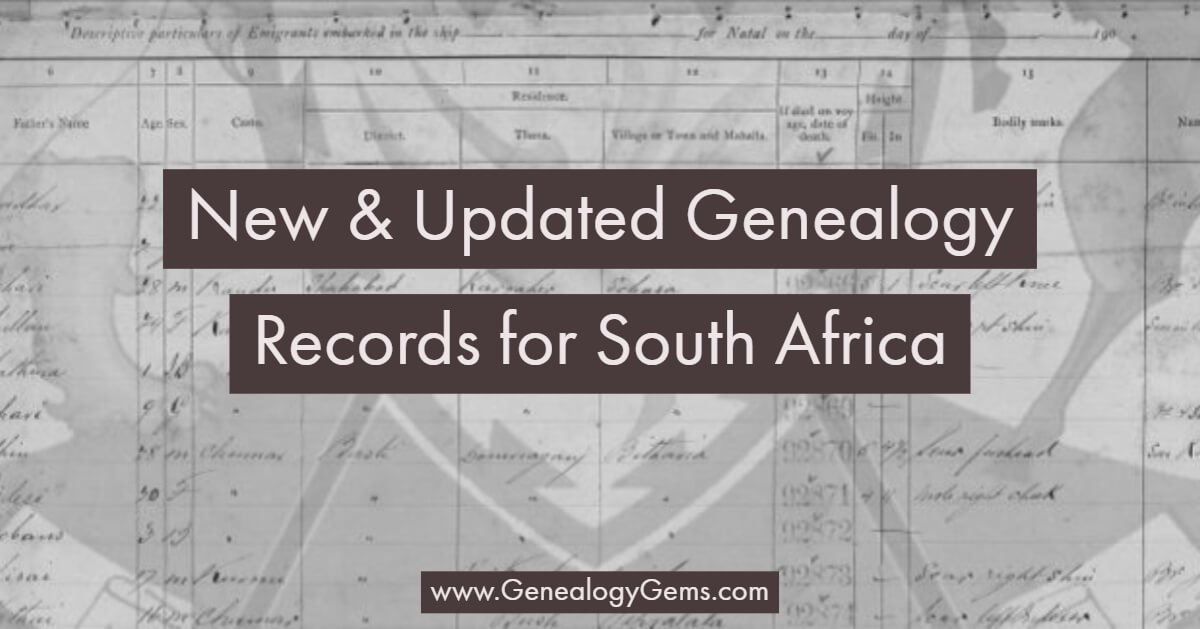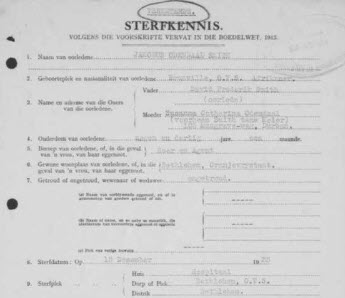NEW Ukraine Genealogy Website Tops List of New Genealogy Records Online
Read all about a new free Ukraine genealogy website, Yorkshire parish records, English workhouse records, German vital records and digitized newspaper coverage of England, Ireland and Scotland.

A New Ukraine Genealogy Website! Vital records and family trees
A new, free Ukraine genealogy website has launched with free family-tree building capability and an enormous database of nearly 300 years of genealogical records from present-day Ukraine. “The database includes 2.56 million people and is expected to reach 4 to 5 million in 2019,” reports EuroMaidan Press. “The access to its contents is and will remain free of charge. The sources of data are manifold: birth registers, fiscal and parish censuses, lists of nobility, voters, the military, and victims of repressions, address directories, and other documents produced under the Tsardom of Muscovy, Russian and Habsburg Empires, Poland and the Soviet Union. A Roman-letter version of the data index is reportedly to be enabled in the coming months.”

To translate the site, bring it up in Google Chrome and right-click.
The family tree-building feature has already proven incredibly popular, reports the same article: “nearly 18 thousand trees have been created in the first couple of days following the official inauguration of the site.” Automated tree-matching hinting will apparently be added in July 2017.
If you have Ukrainian roots, you may also want to read this article about how to request KGB files on relatives.
British Newspaper Archive: New content and free webinar!
The following historical newspaper coverage has been added to the British Newspaper Archive. They add about 100,000 pages every week–learn more about what they do in the free webinar, below.
- England.
- London: The Kilburn Times.
- Essex: The Southend Standard and Essex Weekly Advertiser from Southend-on-Sea.
- Hertfordshire: Watford Observer, for the town of Watford; added 1879-1886 to this paper’s coverage.
- Staffordshire: The Staffordshire Chronicle from the county town of Stafford.
- West Yorkshire: Wharfedale & Airdale Observer, published in Otley.
- Ireland. Londonderry: Northern Constitution/Coleraine Constitution (1888-1887).
- Scotland: Rothesay Chronicle, covering the Isle of Bute, Isle of Arran, and the mainland. Added coverage for 1884-1892.
More Irish newspapers: Findmypast has added 20th-century coverage of Dublin in the form of about 155,000 news articles from The Catholic Standard. (Limit your search to this paper by using the filters along the left side of the webpage.) The coverage includes weekly news reports dating from 1933-1949 and 1951-1957.
England
1861 workhouse inmates. Ancestry.com subscribers can now search indexed images of a new collection, England and Wales, Long-Term Workhouse Inmates, 1861. “This collection comprises records and images from a volume listing every adult ‘pauper’ in each Workhouse in England and Wales, who had been resident there for five or more years in 1861,” states the collection description. The report was in response to a government mandate to record long-term residents of workhouses. “The report was printed on 30 July 1861 and listed 14,216 adults,” continues the collection description. “When compared with the total workhouse population of approximately 67,800 adult workhouse inmates (excluding vagrants) the percentage of long term inmates was just over 21%.”
Yorkshire parish records. Findmypast has published these new church record collections for Yorkshire:
- Yorkshire Parish Registers and Bishop’s Transcripts. Over 11,000 browse-only volumes of baptisms, marriages, and deaths dating back to 1538.
- Yorkshire baptisms. Over 600,000 records have been added for Sheffield and the East Riding to this database, which now has more than 5 million entries.
- Yorkshire banns. Over 30,000 entries have been added for Sheffield and the East Riding.
- Yorkshire marriages. Over 400,000 entries have been added for Sheffield and the East Riding. The database now has nearly 3 million records.
- Yorkshire burials. Over half a million new burials have been added for Sheffield and the East Riding; this database now tops 4.7 million.
Germany: Church and civil records
Ancestry.com has a new browse-only collection of church records from 42 communities in Erfurt, the capital of Thuringia. According to a collection description, “The vast majority of the church records are from Protestant communities, but some Catholic and Jewish communities are also included. In one case, records from the ‘Kaufmannsgemeinde’ or merchants’ community are included.”
Also at Ancestry.com is a new collection of browse-only civil marriage records. Bischofswerda, Germany, Marriages, 1876-1922 includes government records of marriages from Bischofswerda and 11 other communities from the district of Bautzen; date ranges of records from each may vary.
Subscribe to the free weekly Genealogy Gems newsletter! You’ll stay up-to-date with the latest genealogy records online and genealogy news you want to know–like the recent announcement of the end of FamilySearch microfilm lending and RootsMagic’s new ability to sync with Ancestry.com.

Disclosure: This post contains affiliate links and Genealogy Gems will be compensated if you make a purchase after clicking on these links. Thank you for supporting Genealogy Gems!



